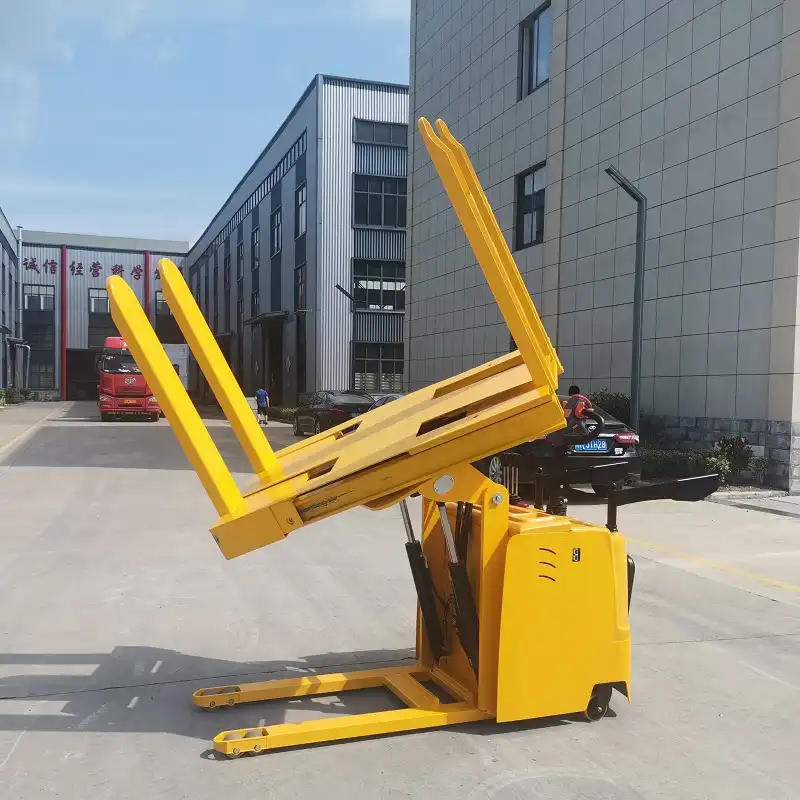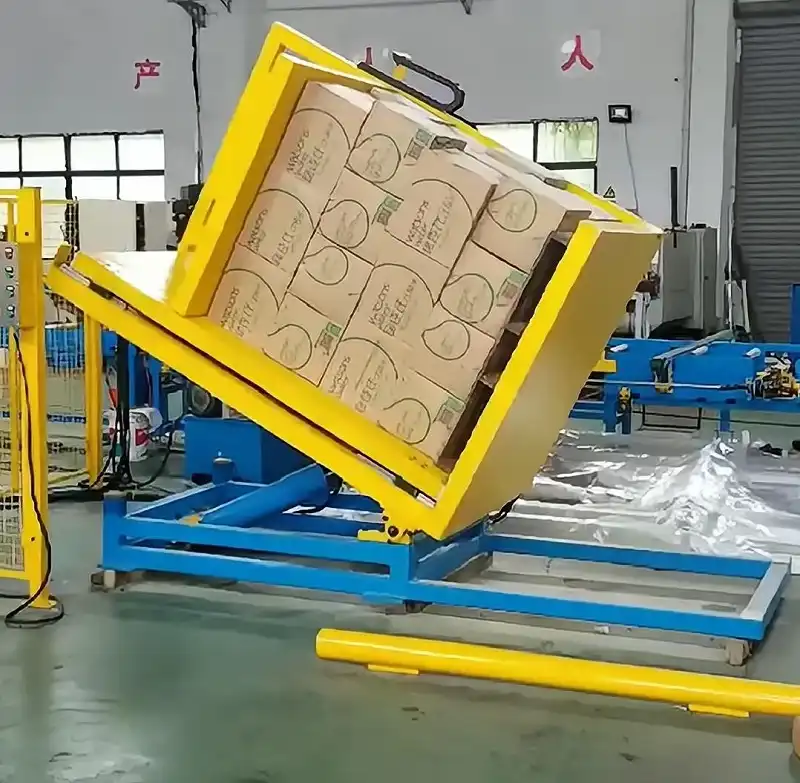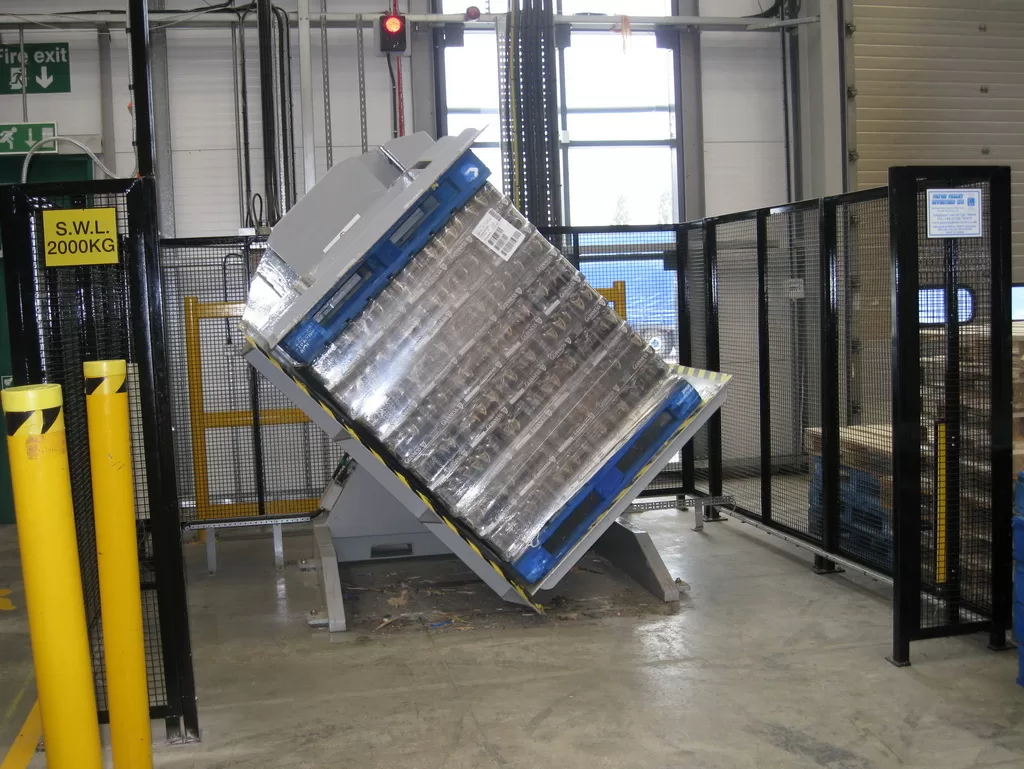Pallet Exchanger Price
The price of a pallet exchanger is a significant consideration for businesses aiming to enhance their logistics operations. It’s not just a number; it reflects efficiency, durability, and the ability to meet specific industrial demands. Whether you’re a small retailer or a large-scale distributor, understanding the cost dynamics of pallet exchangers can transform the way you handle your operations.
The price range can vary widely based on factors such as the type of exchanger, operational capacity, material quality, and added functionalities. Businesses often wonder—what’s a reasonable investment, and how can one optimize costs while ensuring robust performance?
Investing in a pallet exchanger isn’t just about solving a problem; it’s about adopting a strategic solution. These machines streamline workflows, reduce manual labor, and improve workplace safety. But how does the price justify the benefits? Let’s dive into the details and understand the factors shaping the price of pallet exchangers.
[Claim]: Knowing the cost structure of pallet exchangers equips you to make informed decisions that align with both your budget and operational needs.

1. What factors influence pallet exchanger prices?
1.1 Understanding types of pallet exchangers
Pallet exchangers come in a variety of types, each designed for specific use cases. There are stationary models that suit industrial environments, mobile versions ideal for flexible workflows, and fully automated systems built for high-volume operations.
Each type has a unique price range:
-
Stationary pallet exchangers: These are usually the most affordable, priced between $5,000 and $10,000. They are reliable for businesses with predictable and steady operations.
-
Mobile pallet exchangers: With added flexibility, these models range from $8,000 to $15,000, depending on their portability features.
-
Automated systems: These are premium solutions, starting at $20,000 and climbing up to $100,000 for cutting-edge technology.
The type you choose heavily depends on your industry and workflow. While a stationary model might suffice for a small business, a large-scale distribution center would benefit from automation despite the higher cost.
1.2 Key features impacting pricing
When it comes to the price of a pallet exchanger, the features play a pivotal role. Advanced functionalities like hydraulic lifts, automated stacking, and remote control interfaces can significantly add to the cost.
-
Hydraulic lifts ensure smooth and fast pallet transitions, ideal for fragile goods.
-
Automation not only reduces human intervention but also boosts efficiency, justifying the premium price tag.
-
Safety features like emergency stop mechanisms and fail-safes are non-negotiable for industries handling hazardous materials.
While these features add convenience, they also contribute to price variation. For instance, a basic manual pallet exchanger may cost $4,000, but adding automation can increase the price by 50% or more.
1.3 Role of materials and durability
Durability is a significant factor when determining cost. Heavy-duty pallet exchangers are often constructed from high-grade stainless steel or aluminum, which makes them resistant to wear and tear.
For industries dealing with heavy loads or corrosive environments, opting for robust materials is essential. While these models may initially cost more—$10,000 to $15,000 on average—their longevity and reliability result in lower maintenance expenses over time.
2. How do operational requirements shape costs?
2.1 Load capacity and performance standards
One of the primary considerations when choosing a pallet exchanger is its load capacity. Machines designed to handle heavier loads naturally come with higher price tags.
-
Models with a standard capacity of 1,000 kg typically range from $5,000 to $8,000.
-
Exchangers with higher capacities exceeding 2,500 kg often exceed $20,000 due to their reinforced structure and advanced engineering.
Higher capacity exchangers also perform more consistently under pressure, making them indispensable for sectors like construction and manufacturing.
2.2 Integration with existing systems
Seamless integration into your warehouse or supply chain is another cost determinant. Machines designed to work with automated storage and retrieval systems (AS/RS) or conveyor belts often come with higher upfront costs due to compatibility adjustments.
However, investing in such systems ensures that your pallet exchanger fits seamlessly into the existing workflow, reducing downtime and maximizing productivity. Customizing a machine for such integration can add 10–20% to the base price, but the operational efficiency gained often justifies the cost.
2.3 Cost implications of customization
Customization is a game-changer for businesses with unique operational needs. Whether it’s tailoring the exchanger for non-standard pallet sizes or equipping it with specialized features for sensitive goods, the costs can rise significantly.
For example:
-
Adding temperature-resistant components for cold storage might increase the cost by $2,000–$5,000.
-
Custom dimensions to accommodate irregular pallet sizes could result in a 15% price hike.
These expenses may seem steep initially, but they ensure the machine is tailored to your specific operational demands, ultimately offering better ROI.

3. What are the hidden costs of pallet exchangers?
3.1 Maintenance and operational costs
While the initial price tag of a pallet exchanger is a key consideration, many buyers overlook ongoing maintenance costs. A well-maintained pallet exchanger will outperform its competitors and ensure a longer lifespan, reducing the need for expensive repairs. However, it’s important to factor in both scheduled and unscheduled maintenance expenses when budgeting for the system.
-
Routine maintenance: Includes lubrication, cleaning, and part replacements. This might cost anywhere from $500 to $1,500 annually depending on the system’s complexity and frequency of use.
-
Emergency repairs: When something goes wrong, repairs can be costly. Some parts, such as hydraulic systems or electric motors, can cost thousands to replace.
To keep costs manageable, many companies opt for maintenance contracts offered by manufacturers. These often cover both preventive and corrective services, ensuring the machine continues running smoothly.
It's also important to consider the operational costs tied to the use of the pallet exchanger. In automated systems, electricity consumption can vary. On average, running an automated pallet exchanger may cost $1,000 to $3,000 per year depending on the workload, while manual or semi-automated systems tend to use less energy.
3.2 Downtime and productivity losses
The impact of downtime on your business can be significant, especially if you rely heavily on a pallet exchanger for operations. A sudden malfunction or breakdown can halt production and delay deliveries, resulting in financial losses.
For automated models, downtime costs are typically higher due to the complexity of repairs. In contrast, manual models are simpler to fix, but they may still require operational adjustments.
-
Automated systems: A typical repair or downtime situation could cost a business $1,500 per day in lost productivity.
-
Manual systems: While repairs are cheaper, the absence of automation often means slower production rates, which can indirectly lead to higher labor costs or missed deadlines.
Therefore, while automated pallet exchangers come with higher initial costs, they may provide long-term savings by reducing downtime and improving overall throughput.
3.3 Warranties and service contracts
Most pallet exchangers come with warranties that cover defects in materials or workmanship. However, understanding the scope of this warranty is essential to avoid surprise costs later.
-
Basic warranties: Often last for 12–24 months and only cover factory defects. After the warranty expires, you'll need to handle repairs and replacements at your own cost.
-
Extended warranties: These can last up to 5 years and often include additional services like annual check-ups and priority support for repairs.
The cost of an extended warranty typically adds 5–15% to the initial price of the pallet exchanger but can be worth the investment, especially for more expensive, automated models.
Some companies also offer service contracts that cover both maintenance and warranty, providing a more predictable and cost-effective option for long-term ownership.
4. How to find the right pallet exchanger for your budget?
4.1 Balancing cost and functionality
When considering the cost of a pallet exchanger, it’s easy to get caught up in the idea of choosing the cheapest option. However, it’s crucial to find the right balance between cost and functionality. The goal is to select a model that suits your needs without overspending or sacrificing quality.
To do this, consider the following:
-
Volume of use: If you plan to use the pallet exchanger frequently, it’s worth investing in a higher-end model that can handle the workload with ease.
-
Operational requirements: Identify the features that are most important to your business, such as load capacity, automation, or mobility, and match them with the right machine.
-
Long-term value: It’s tempting to go for the lowest upfront cost, but higher-end models often offer better value over time due to increased reliability, longer lifespan, and reduced maintenance costs.
It’s essential to balance these factors and recognize that a slightly higher initial cost could save you money in the long run by improving efficiency and minimizing downtime.
4.2 Comparing brands and manufacturers
Not all pallet exchangers are created equal, and comparing brands and manufacturers is crucial to finding the best deal. Some brands are known for producing high-quality, durable machines that last for years, while others might offer cheaper alternatives with lower performance standards.
Consider these factors when evaluating different manufacturers:
-
Brand reputation: Look at customer reviews and case studies to gauge the manufacturer’s reputation in the industry. A well-known brand may cost more, but it often offers superior support and reliability.
-
Customer support: A good manufacturer provides excellent customer support, including fast response times for repairs, product training, and troubleshooting.
-
Warranty and after-sales service: Some manufacturers offer longer warranties or additional services like free servicing for the first year, which can reduce your overall costs.
Taking the time to evaluate multiple brands and options ensures that you get the best value for your investment. Don’t just focus on the initial cost—look at the total cost of ownership over the life of the machine.
4.3 Investing in long-term value
Pallet exchangers are an investment that should deliver long-term value for your business. While it might be tempting to opt for the cheapest option, it's essential to consider the machine’s potential lifespan, durability, and ongoing costs.
The most cost-effective pallet exchanger is one that helps you increase operational efficiency and productivity while minimizing maintenance and downtime. Investing in higher-quality machines may cost more upfront but can ultimately reduce costs related to repairs, replacements, and operational disruptions.
-
Total cost of ownership: This includes not just the purchase price but also operating costs, maintenance, and repairs over the machine's lifetime.
-
Efficiency gains: A well-selected pallet exchanger can boost throughput and reduce labor costs, leading to a higher return on investment (ROI).
Look at the overall picture—sometimes spending more initially will save you money in the long run.
Conclusion
Pallet exchangers are more than just tools; they are integral parts of modern logistics operations. The price of a pallet exchanger reflects its capabilities, features, and the value it provides to your business. By understanding the factors that influence the cost, such as type, features, load capacity, and maintenance needs, you can make a more informed decision that aligns with both your budget and operational goals.
While higher-end models come with a higher price tag, they often offer better long-term value in terms of efficiency, durability, and reduced maintenance costs. Whether you opt for a manual, mobile, or automated system, remember that the right pallet exchanger is one that fits your unique needs and improves your overall workflow.
By considering factors like operational requirements, hidden costs, and total cost of ownership, you can identify the best solution for your business that balances cost and functionality.






















